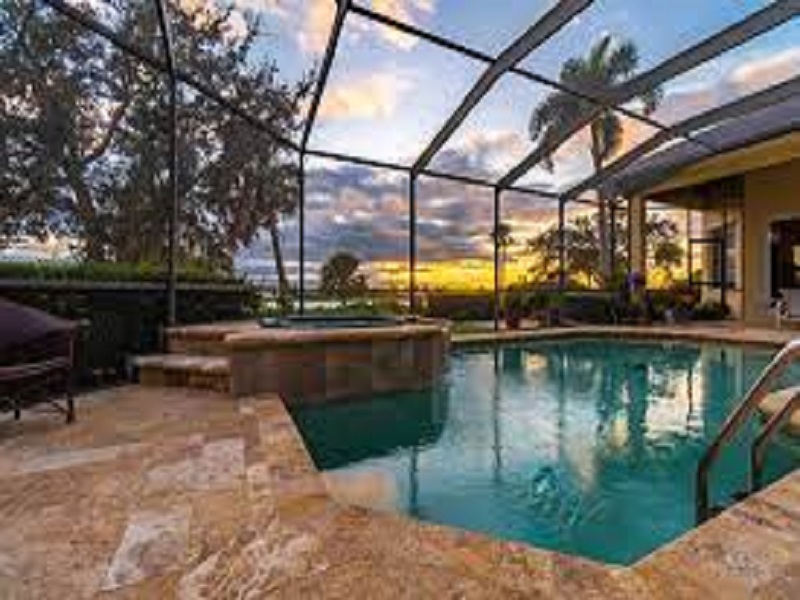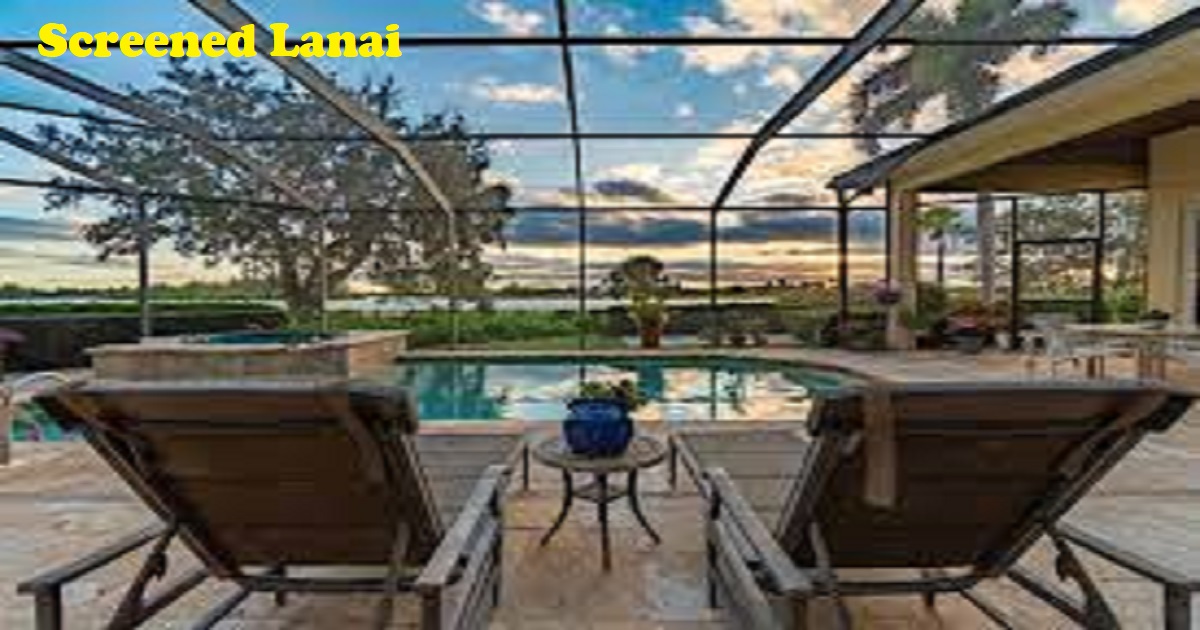What is a screened lanai?
During nice weather, enjoying the comfort of the weather by sitting on the porch of a home is a pleasurable experience. A well-designed and decorated lanai or patio in your home is, of no doubt, where you can enjoy this experience. A lanai is typically your home’s patio, veranda, or porch combined. It typically has a roof and is accommodated into the house’s floor plan.
A lanai is composed of a solid concrete floor enclosed in glass or screen. The concept of constructing lanai in homes originated in Hawaii and is getting very popular in modern home constructions across the US.
Whether planning to build a screened-in porch or already living in a home with a lanai, this article will be for you. It covers different aspects of screened lanai, their different types, the Pros and Cons of screened lanai, the average cost of screened lanai, differences between types of porches, installation of screened lanai, and other facts related to the lanai.
Difference between screened lanai and porch
One can easily get mistaken for a screened lanai and porch because both of them have furniture or other outdoor furnishings. Screened lanais can be differentiated in a few particular ways, explained below.
- A porch with an exterior extension that is at the same level as the interior is constructed in front of the building’s entrance. Chennai, on the other hand, is connected to the main entrance and has a roof over it.
- A porch typically consists of columns, railing, or short walls, whereas the lanai can consist of screened walls with a rooftop.
- Porches can be located on the front side of the home but rarely on the back side. A lanai, on the other hand, is found mainly on the front of any residence.
Installation of a Screened Lanai

Installing a screen-in lanai could be a labor-intensive method. The installed screens develop noticeable sags after a few months. But installing screens may be done in a much better and more straightforward approach, and it doesn’t require much experience. Below are the steps which anyone can use to install screened-in lanai in simple steps.
1. Install Vertical Base Strips
The first step you have to do is to fasten and install the vertical base strips outside the porch post. You can use the base length according to the requirements for your porch lengths.
2. Trim the Base Strips
After that, you can trim the base strips to the desired length as vertical base strips. To the 2×4 rails, screw the one 1/2-inch-wide base.
3. Install the Screening
The next step is to pull the screen fabric tightly with one hand as you roll the spline into the base strip’s groove.
4. Trim Away Excess Strip
You can remove extra screening by running a utility knife along the elevated spline groove’s edge.
5. Enhance the bottom screens’ durability (optional)
The lower portion of the walls, the door, and any other screen that is strong and tear-resistant can be installed on this porch.
6. Install Wide Cap Trim
Now, you must use the Long length of wide cap trim to cover the foundation strips and screen splines on the desired porch posts.
7. Install Narrow Cap Trim
Using a non-marring mallet, tap the narrow cap trim onto the base strips that have been screwed to the chosen length railing.
8. Set up the base strip trim
After tapping it onto the base strip, cut the thin, horizontal cap trim to length with pruning shears.
9. Install the Screen Door
We put in a solid-vinyl screen door with the new screening system. It never requires painting.
Are you interested in to know interesting facts about ‘Stormwater Drainage Systems’, read this article in our ‘Home Improvement‘ category: What Are Different Stormwater Drainage Systems? A Detailed Guide
The standard screening cost of Lanai
If you spend a lot of time outside or at home, a screened-in lanai may be expensive, but it is worth the minor investment. Be sure to review the costs and benefits of having a screened-in lanai in your backyard before deciding whether or not it is the appropriate choice for your house.
The average material cost to screen in lanai is approximately $4.46 per square foot, ranging from $3.76 to $5.16 depending on the type of material. Between $11.35 to $14.79, the total average cost of labour and materials per square foot is close to $13.
For calculation purposes, lanai screening typically costs $2,615 for a 200-square-foot project.
Pros and Cons of a Screened Lanai
Building an open lanai or covering it with screening material can be based on specific requirements. But, one can choose from either an open lanai or a screened-in lanai, as each option has its Pros and Cons. Here are a few advantages and disadvantages of the screened lanai.
Pros of screened-in lanai
A screened porch performs the crucial task of keeping these troublesome insects out. This step is vital because these insects can be disturbing to stay outside while being bothered by flies and annoying mosquitoes collecting nearby.
Cleaning the screens of the lanai to protect your home interior and furniture from debris and pollen can be another pro of screened-in lanai. Sweeping out the leaves from the porch in fall or cleaning the dirt and debris from the furniture in the spring can be difficult. But the screens will block a lot of debris and save a lot of cleaning trouble.
- On an open porch, insects, rats, and other rodents can get into your yard or patio and gather on the food items, making them polluted. Still, the screened lanai blocks them from getting into your patio and protects your food items from them.
- With a proper screening of your lanai, you have the power to make it comfortable for sitting and enjoying at any time of year. Many lanai patios have fireplaces or heaters to keep them cozy in the winter and fans to keep the summer cool. So due to screens installed, the enclosed space becomes more efficient, and all equipment is protected.
- A screen installed in a lanai can save many things, so you can also install electronics items in your screened porches like TV and LCDs.
Cons of screened-in lanai
- Screens won’t block your vision, but they aren’t completely open and unfiltered. Think of the visuals you’ve seen. One of the main advantages of sitting on your porch if you have a lovely yard is taking in the view. Although it didn’t block the image, a screen makes it less transparent.
- It costs extra to screen on your porch. It costs more to build and takes a bit longer. You can therefore expect a higher price. However, it would help if you always weighed the potential benefits of an added cost when assessing costs.
- Screening on your porch will cost more. It takes longer to construct and requires more resources. However, it would help if you constantly analyzed the potential benefits of an additional expense when comparing costs.
Conclusion
Overall, screening a lanai is a beautiful addition to most homes. It offers outstanding protection from natural elements to the porch, adds more space, and requires regular maintenance. A screened-in lanai
needs to be thoroughly cleaned and cannot be used all year. This article highlights the pros and cons of having a screening in homes’ lanai and their average costs together with different types of lanais.
Apart from this, if you are interested to know more about Manila Cost Of Living then visit our FEATURED category.








